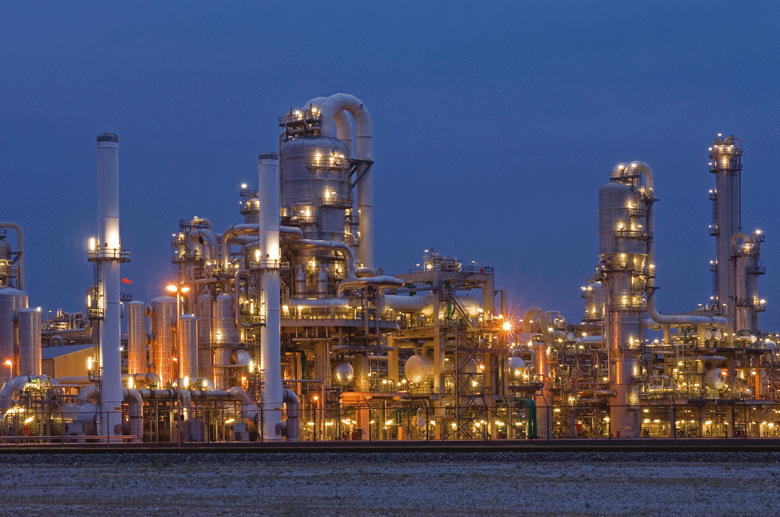

| By Ganesh Pattabhiraman, Plantweb sales director—Middle East and Africa at Emerson Automation Solutions |
Emerson’s digitisation strategy is built around helping its customers reach top quartile performance. The US-based company’s technologies help lower costs, reduce complexity and accommodate change through its project certainty approach, innovative technologies, tools and proven service capabilities.
During the operational phase of the plant, Emerson collaborates with end-users to understand the root cause of lost opportunities in safety, reliability, production, energy and emissions.
In this article, Emerson focuses on the operational lifecycle of the plants at which the firm’s operational certainty programmatic approach is helping to target those inefficiencies in a structured way using its Plantweb Digital Ecosystem, a collaboration software platform.
Real-world examples
Customers who benefitted the most have leveraged the scalability of the Plantweb platform to prioritise their issues and have invested in digital technologies in a systematic way to realise return on investment at every step.
Corrosion monitoring
A large refinery in the region had to use opportunity crude with a higher total acid number to improve profitability. This involved a potentially higher rate of corrosion of its assets and associated risk. By using Emerson’s real-time corrosion monitoring sensors and analytics, the refinery now has full visibility of the health of its process equipment. This helps to optimise mitigation measures without compromising safety and yield. Non-intrusive wireless corrosion sensors were deployed in a matter of weeks with little infrastructure costs.
Machine health
A major international oil company in the Middle East was experiencing production losses in its downstream plant due to the unexpected breakdown of essential machines, and has now deployed Emerson’s machinery health monitoring system. By implementing the wireless vibration and temperature sensors, the challenge was tackled at a very low cost. Predictive diagnostics provide accurate and early information on the health of equipment, enabling timely corrective actions and significantly reduced downtime.

Another problem area was manual rounds to hazardous areas of the same plant to monitor process parameters from local mechanical gauges, which were prone to frequent failures. Over the past two years, hundreds of mechanical gauges have been replaced with robust wireless sensors that send real-time data to the control room, thus addressing safety concerns. The company plans to use Emerson technologies to monitor leaking pressure-relieving devices and steam traps, as well as to monitor corrosion in important assets.
Monitoring production
A large national oil company automated the production monitoring of more than 500 oil wells, spread over hundreds of square kilometres, using Emerson’s wireless sensors, remote terminal units and Scada system. It now has easy visualisation, analysis of the data and actionable information to take corrective actions with minimal field intervention. Using Emerson technologies helped reduce capital costs by 40 per cent compared with traditional methods.
Handling remote sites
Another very large oil and gas company resorted to Emerson digital technologies to monitor toxic gas in four of its remote unmanned sites, where there was no power and signal infrastructure to deploy conventional detectors. The same company is now using Emerson’s technologies in the water management system at one of its sites. Wireless sensors for monitoring flow, steam traps and pressure-relieving devices are networked over widely spread-out areas of the plant, giving real-time information. The analytics from the system provide actionable information to improve efficiency of water management and enhance asset reliability.
Business results without compromising safety is the end goal, not digitisation itself. It is often mistakenly thought that Big Data analytics alone will solve every problem. Without high-quality, relevant data, analytics cannot deliver the desired results. The common refrain is “we have tonnes of data, but no actionable information”, the truth is vital data needed for meaningful analytics is missing.
With a range of more than 40 non-intrusive and wireless sensors, missing information can be fetched and added very easily and cost-effectively with Emerson’s Plantweb Digital Ecosystem. Emerson has more than 10 years and 10 billion operating hours of experience on these sensors.
 This article is extracted from a report produced by MEED and Mashreq titled Disrupting Oil & Gas. Click here to download the report
This article is extracted from a report produced by MEED and Mashreq titled Disrupting Oil & Gas. Click here to download the report
To know more about the MEED Mashreq Partnership, get in touch with us at MEEDMashreqPartnership@meed.com or find more info on www.meedmashreqconstructionhub.com
You might also like...

Al Ula seeks equestrian village interest
26 April 2024

Morocco seeks firms for 400MW wind schemes
26 April 2024

Countries sign Iraq to Europe road agreement
26 April 2024

Jubail 4 and 6 bidders get more time
26 April 2024
A MEED Subscription...
Subscribe or upgrade your current MEED.com package to support your strategic planning with the MENA region’s best source of business information. Proceed to our online shop below to find out more about the features in each package.




